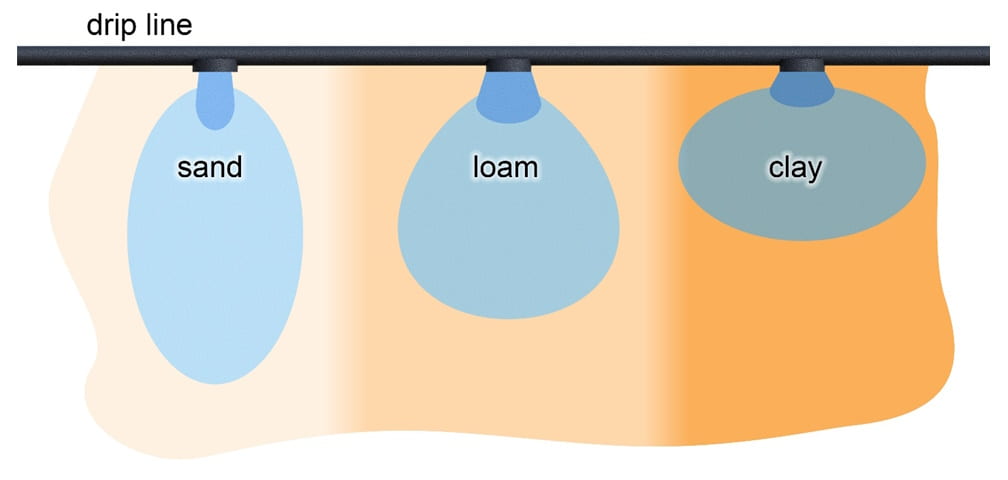Emmalea Ernest, Extension Fruit & Vegetable Specialist; emmalea@udel.edu and James Adkins, Irrigation Engineer, adkins@udel.edu
It is best to form raised beds and lay plastic mulch when the soil moisture level is at or near field capacity. Field capacity can be simply explained as the point where all of the water from a major rain event has runoff or fully infiltrated beyond the root zone. Sandy soils will reach field capacity about 12 hours after a saturating rain or irrigation; heavier soils can take 2-3 days to reach field capacity after saturation. If plastic mulch is laid onto dry soils, it can be challenging and time consuming to fully wet the soil using only the drip irrigation system. Having dry soil in the bed not only interferes with crop water availability but also reduces heat accumulation in the soil. If possible, avoid these challenges by only laying plastic when the soil contains significant moisture.
If overhead irrigation is not available growers should prepare the soil and wait for adequate rain before pulling the beds. However, if time is tight and plastic must be laid with dry soil, shorter irrigation run times will be more effective in promoting movement of water throughout the mulched bed. On sandier soils and dryer soils, water moves down in the soil profile (and out of the root zone) more quickly. Sandy and dry soils also have less lateral movement of water, which is what makes it challenging to wet the full width of a bed (Figure 1).

Figure 1. Wetting pattern produced by drip emitters in different soil types.
Below is Table C-5 from the Mid-Atlantic Commercial Vegetable Production Recommendations, which lists maximum run times for drip irrigation on various soil types. There are several things to note about this information that can help you make decisions about maximum run times. On loamy sand soils (green shading), the maximum run time ranges from 1.7 hours for high flow tape to 5.1 hours for low flow tape. However, this recommended runtime assumes that the crop is using water. If the crop has not yet been transplanted or is too small to be using significant amounts of water, cut the maximum run time in half. For the purpose of wetting dry plastic mulch beds early in the season the maximum run times are 50 minutes to 2.5 hours on loamy sand, and 1.6 to 4.9 hours on sandy loam. The time between irrigation runs should be at least two hours.
Table C-5: Maximum Number of Hours per Application for Drip Irrigated Vegetables
Based on a 12-inch deep root zone and irrigation at 50% soil moisture depletion during the day. Cut the maximum run times in half for nighttime irrigation and when active crop water use is not occurring.
| Soil Texture | Estimated Wetted Width (in) | Maximum Run Time (hours) by Tape Flow Rate (gpm/100’) | |||
| 0.22 | 0.34 | 0.45 | 0.67 | ||
| Coarse Sand | 8 | 1.5 | 1.0 | 0.7 | 0.5 |
| Fine Sand | 10 | 3.3 | 2.1 | 1.6 | 1.1 |
| Loamy Sand | 12 | 5.1 | 3.3 | 2.5 | 1.7 |
| Sandy Loam | 16 | 9.8 | 6.4 | 4.8 | 3.2 |
| Fine sandy Loam | 20 | 15.1 | 9.8 | 7.4 | 5.0 |
| Loam and Silt Loam | 24 | 22.7 | 14.7 | 11.1 | 7.4 |
| Clay Loam | 24 | 19.3 | 12.5 | 9.4 | 6.3 |
| Silty Clay and Clay | 24 | 17.0 | 11.0 | 8.3 | 5.6 |
